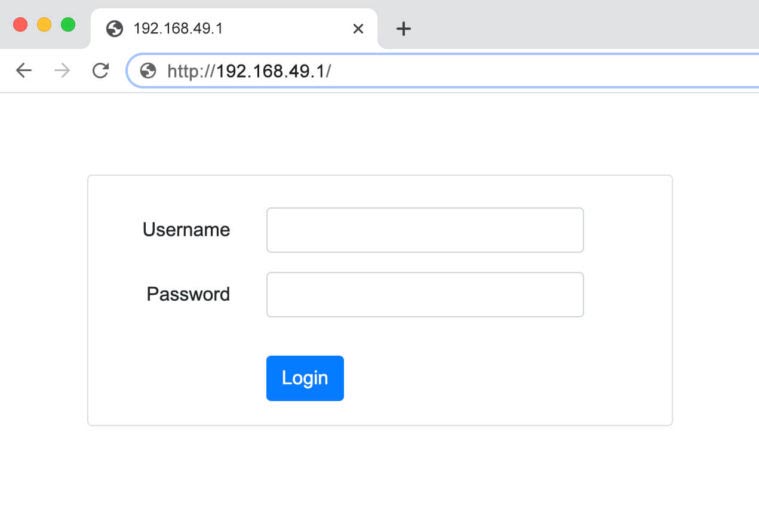192.168.49.1 is a private IP address that functions as the gateway to your router’s management console. This specific address serves as the digital doorway for accessing and configuring your network settings, allowing you to customize everything from basic security parameters to advanced network configurations. Whether you’re setting up a new router or troubleshooting connection issues, understanding how to navigate this portal is essential for maintaining an efficient home or office network.
How to login to 192.168.49.1?
Before attempting to access your router’s admin panel, ensure your device is connected to the network – either through WiFi or via an Ethernet cable. Once connected, follow these steps:
- Launch your preferred web browser (Chrome, Firefox, Safari, or Edge)
- Type http://192.168.49.1 in the address bar (avoid adding www or https prefixes)

- Press Enter to load the login page
- Enter your router’s administrator credentials
- Click on the login button to access the management interface
Upon successful authentication, you’ll gain access to the control center where all your router’s settings reside. This includes wireless configuration options, security settings, connected device management, and various network diagnostics tools.
Find the Router’s Default IP Address
Not all routers use 192.168.49.1 as their default gateway. If you’re unable to connect using this address, you may need to identify the correct IP. Here’s how to find it:
On Windows systems:
- Open Command Prompt by typing “cmd” in the Start menu
- Enter “ipconfig” and press Enter
- Look for the “Default Gateway” entry – this is your router’s IP address
For Mac users:
- Open the Terminal application
- Type “netstat -nr | grep default” and press Return
- The IP address displayed is your router’s gateway
On smartphones, you can typically find this information in your WiFi connection details under network settings. Alternatively, check your router’s documentation or look for a label on the device itself, which often contains this information alongside the default login credentials.
Customize Wireless Network Settings
Once inside the admin console, you can personalize your network by changing two critical identifiers: the network name (SSID) and password. This is particularly important for security reasons and for creating a network that’s easily identifiable among neighboring signals.
Change Wi-Fi Network SSID:
- Navigate to the Wireless section of your admin panel
- Look for “Network Name” or “SSID” settings
- Enter your preferred name in the provided field
- Apply or save your changes
- Wait for your router to implement the new configuration
Change Wi-Fi Network Password:
- Access the Wireless Security settings
- Select WPA2-PSK encryption (for optimal security)
- Create a strong password combining uppercase and lowercase letters, numbers, and special characters
- Save your changes
- Reconnect your devices using the new credentials
Remember that after updating either setting, all previously connected devices will need to reconnect using the new information. This temporary inconvenience is a small price to pay for improved network identification and security.
Troubleshooting Common Access Issues
If you encounter difficulties accessing the 192.168.49.1 admin interface, consider these quick fixes:
- Verify your connection status – ensure your device is properly connected to the router
- Try clearing your browser cache or using a different browser
- Double-check for typing errors in the IP address
- Confirm your router actually uses 192.168.49.1 as its default gateway
- Reset your router if you’ve forgotten the login credentials (locate the small reset button on your router, press and hold it for 10-15 seconds)
A factory reset will restore all settings to their defaults, including the administrator username and password. Be aware that this also means you’ll need to reconfigure all your personalized settings afterward.
Understanding how to access and navigate your router’s administrative interface through 192.168.49.1 puts the power of network customization at your fingertips. With this knowledge, you can optimize your connectivity experience while maintaining appropriate security measures for your digital environment.
